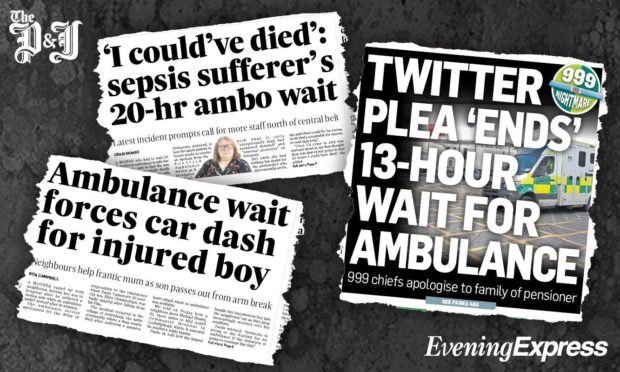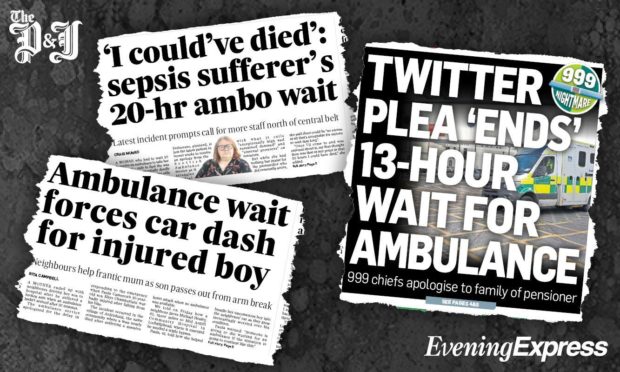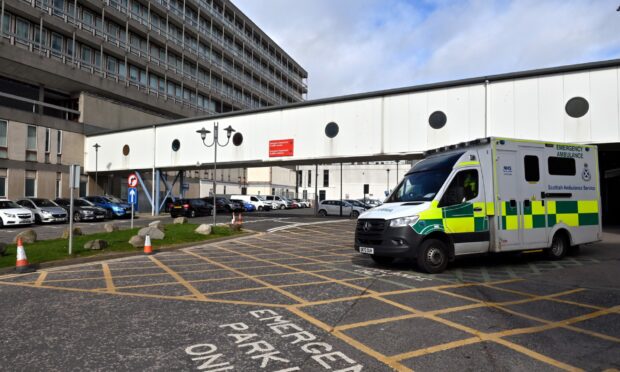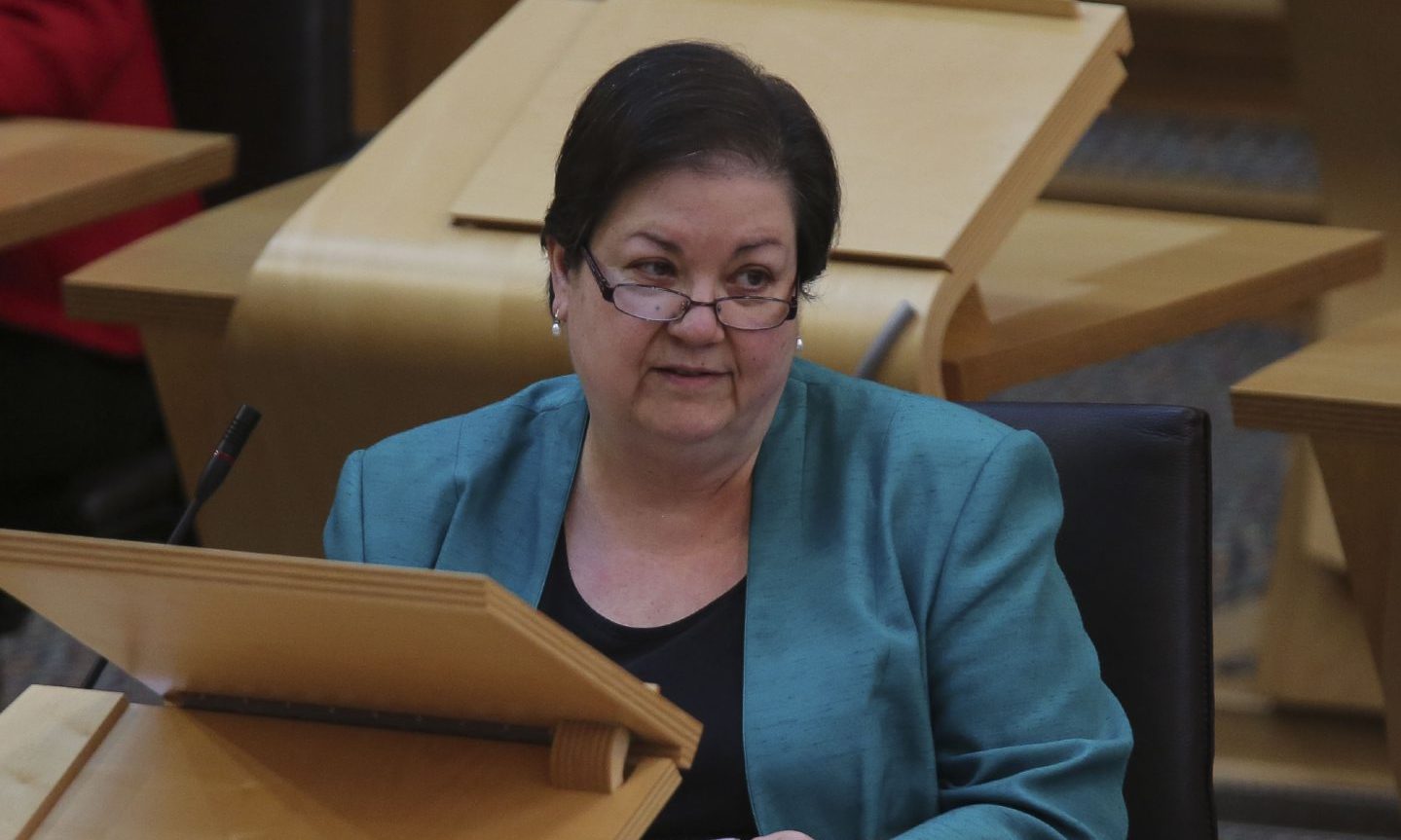Having to dial 999 to get an ambulance for ourselves or a loved one is a moment we all dread.
Amid the panic though, there is the comforting thought that a crew will be dispatched within moments, the wail of sirens growing louder as they approach.
But that’s not always the case, and worrying waiting times are becoming an increasing occurrence across Scotland.
We have reported on several instances where patients feel they have been let down by the system, and have heard from NHS and Scottish Ambulance Service chiefs about the stark reality of the situation.
Here, we explain what is causing the worrying trend.
What are the target times for ambulance responses?
The ambulance service has a national standard of answering 75% of Category A calls, which are ones classed as “life-threatening”, within eight minutes.
Calls are graded according to their severity as: purple for most serious, red, amber, yellow and green where there is “potential for alternative care”.
The model was introduced in 2016, and about two years later Scottish Ambulance Service bosses found it had helped to save 43% more lives.
It recently emerged that the number of times where people in a serious condition have had to wait more than 10 minutes for an ambulance has more than doubled since 2019.
What is meant by “turnaround time”?
This refers to the amount of time paramedics spend at hospital dropping off patients before being able to return to the road.
The target turnaround time is 20 minutes per patient, but it can occasionally be longer.
Prolonged turnaround times are particularly responsible for the recent spate of patients left waiting many hours for treatment.
Why aren’t ambulances able to meet these targets all the time?
Crew shortages and staff absences can impact ambulance availability at any time, but the problem has become more shocking than ever now as a result of increasing pressure on A&E departments.
Wards are still operating at reduced capacity because of Covid, meaning paramedics are forced to wait outside with patients – sometimes for hours – before being able to be deployed elsewhere.
But Covid restrictions have been in place at hospital wards for a long time, so why is this a problem all of a sudden?
It might feel like life has snapped back to normal after lockdown, with revellers once again dancing in nightclubs, Pittodrie filling with thousands and some major concerts on the horizon.
But it’s a more complex situation for the NHS.
More people are turning up at A&E than at any other point during the pandemic, and the wards remain under tight Covid capacity restrictions.
And on top of that, those arriving at hospital are said to be more sick than normal.
Why are people “more ill” than usual?
Many people put off treatment and scores of surgeries were delayed as the nation was gripped by lockdown restrictions.
Now, when people are arriving at hospitals, health chiefs say they are in a worse state than before.
How frequently are ambulances late, and are lives at risk?
And statistics published last week showed that 17,697 patients waited more than two hours for an ambulance in 2020/21.
But the Scottish Government stressed that target times are still being met in the majority of instances.
A spokesman last week told us: “In 2020/21 our crews responded to over 70% of highest priority calls in under 10 minutes and over 99% in under 30 minutes.”
What’s being done about it?
The NHS and Scottish Ambulance Service have offered assurances that work is going on to reduce the problems – but warned that there will be no easy answers or quick solutions.
Opposition MSPs have suggested a review of social distancing restrictions in hospitals could be carried out, to investigate the possibility of freeing up more space.
Scottish Labour shadow health secretary Jackie Baillie wants more face-to-face GP services to be restored “urgently” to help ease the pressure on emergency wards.
What can people do to help?
The NHS has been very clear that one of the most important ways of easing the problem lies in the public’s hands.
Health bosses have pleaded for people to free up hard-pressed mercy crews by dialling 999 only when they need to.
NHS Grampian’s chief executive, Professor Caroline Hiscox, said: “At the moment we can’t increase hospital capacity further or immediately improve on staff shortages – however if the public continues to work with us we can reduce the number of people attending hospital when another treatment option would be more appropriate.
“Please call 111, or wait to call your GP, unless the situation is life-threatening, in which case call 999 right away.
“In doing this you can help us to maximise the capacity we have and ensure those who are most acutely ill can get a bed. No one wants patients delayed in receiving vital care.”
More information on when to dial 999 is available on the Scottish Ambulance Service website.



